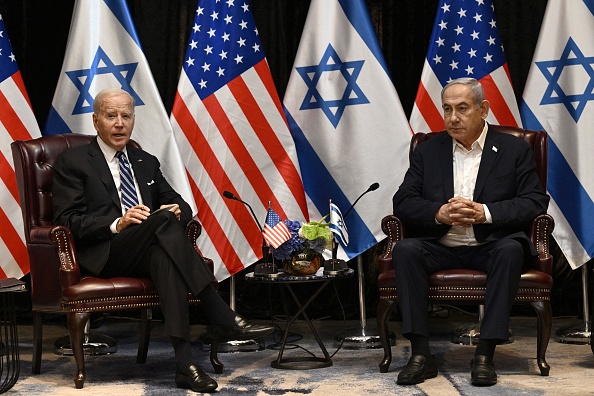The United States has approved at least $17.9 billion in military aid to Israel since the outbreak of the conflict in Gaza last year, a report released by Brown University estimated, setting a record. This is the first statistical analysis of the cost of U.S. support for Israel following the Gaza conflict, released on the one-year anniversary of Hamas’ attack on Israel on October 7th. The report includes the costs prior to Israel opening a second front against Hezbollah in Lebanon.
Israel has been a key ally of the United States since its founding in 1948, receiving the largest share of U.S. military aid in history. The report estimates that Israel has received $251.2 billion in military aid since 1959. This figure has been adjusted for inflation.
The $17.9 billion spent since October 7, 2023 (adjusted for inflation) marks the highest annual military aid provided by the U.S. to Israel in a single year. The U.S. commitment to provide billions in military aid annually to both Israel and Egypt, as stipulated in the 1979 peace treaty, has set Israel’s annual aid amount at $3.8 billion under agreements since the Obama administration, continuing until 2028.
Since the start of the Gaza conflict, U.S. assistance to Israel has included military financing, weapons sales, and the transfer of at least $4.4 billion in U.S. stock and second-hand equipment.
Most of the U.S. weapons delivered in this year include ammunition ranging from shells to 2,000-pound bombs used to attack underground bunkers and precision-guided missiles.
The report states that the U.S. has been Israel’s main arms supplier for the past 50 years. Weapon deliveries since October 7th include 57,000 rounds of ammunition, 36,000 rounds of artillery ammunition, 20,000 M4A1 rifles, nearly 14,000 anti-tank missiles, and 8,700 Mk82 bombs.
Research indicates that expenditures range from $4 billion for replenishing Israel’s Iron Dome and David’s Sling missile defense systems to cash for rifles and jet fuel.
Unlike the U.S. military aid to Ukraine publicly documented, specific details of aid sent to Israel since October 7th last year have been difficult to obtain, as some transactions of lower amounts do not require reporting details to Congress.
Therefore, researchers believe that the $17.9 billion annual aid figure may only reflect a portion of the data.
Since the beginning of the Gaza conflict, the Biden administration has enhanced military presence in the region to deter and respond to any attacks on Israel and U.S. forces. The additional military operations have cost at least $4.86 billion, excluding enhanced military aid to Egypt and other partners in the region.
On the day of Hamas’ attack on Israel, the U.S. had 34,000 troops in the Middle East. By August of this year, with two carriers entering the region, the U.S. military presence increased to about 50,000 personnel. The purpose of the U.S. military buildup was to deter retaliatory actions against Israel after the killing of Hamas leader Ismail Haniyeh by Iran. The total U.S. troops in the Middle East now stand at approximately 43,000.
The number of U.S. ships and aircraft deployed in the Mediterranean, Red Sea, and Gulf of Aden, including carrier strike groups, amphibious ready groups, fighter squadrons, and air defense missile sites, has been fluctuating throughout the year.
The Pentagon stated that another carrier strike group will soon head to Europe, and if two carriers are stationed in the region simultaneously, the total troop presence may increase once again.
Since the start of the conflict, the U.S. military has deployed forces to counter escalated attacks by Houthi militants. The Houthis control the capital and northern regions of Yemen, and have been targeting commercial ships in the Red Sea since the Gaza conflict, in support of Hamas.
Researchers estimate that the $4.86 billion cost of these additional military actions presents an unexpected, complex, and disproportionately expensive challenge for the U.S.
The Houthi militants’ continuous attacks on vessels traversing vital trade routes have forced the U.S. to strike at Houthi launch sites and other targets. This battle has become the most intense naval combat faced by the U.S. Navy since World War II.
The authors of the report stated, “The U.S. has deployed multiple aircraft carriers, destroyers, cruisers, and million-dollar missiles, against cheap Iranian-made Houthi drones costing just $2,000.”
The researchers’ calculations also include at least $55 million in additional combat allowances paid for bolstering military operations in the region.
The report estimates that Houthi attacks on commercial ships have caused an additional $2.1 billion in losses to maritime trade, as shipping companies are forced to alter routes or pay high insurance costs. This could lead to pressure on consumer prices for U.S. goods.
These financial costs were calculated by Linda J. Bilmes, a professor at the Harvard Kennedy School of Government, along with her research partners William D. Hartung and Stephen Semler. They estimated the war costs incurred by the U.S. post the September 11, 2001, attacks.
Reference: This article refers to a report by the Associated Press.

